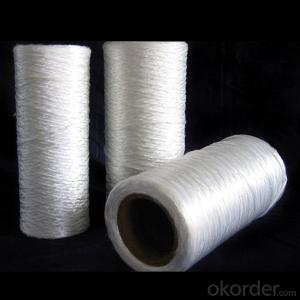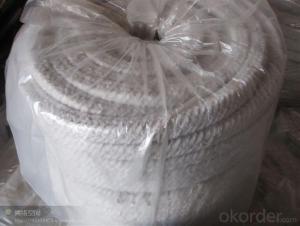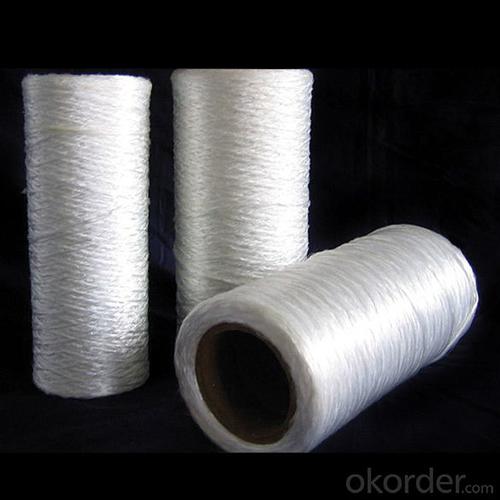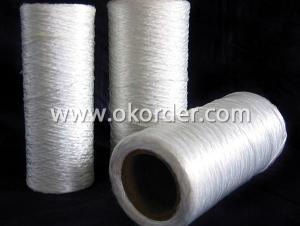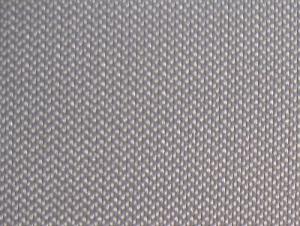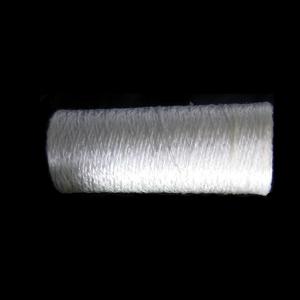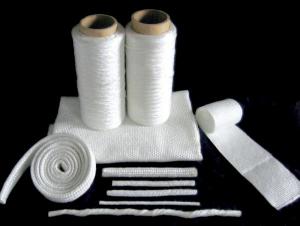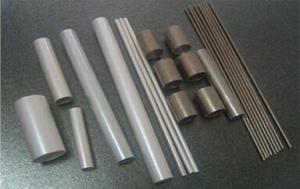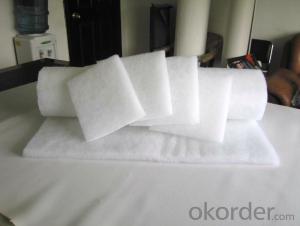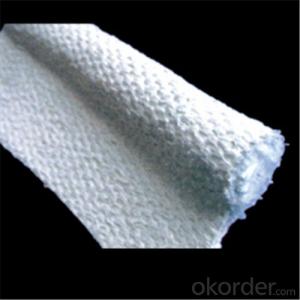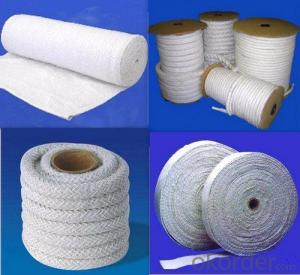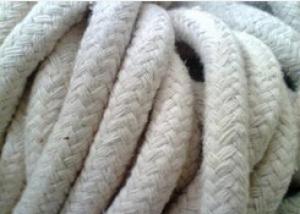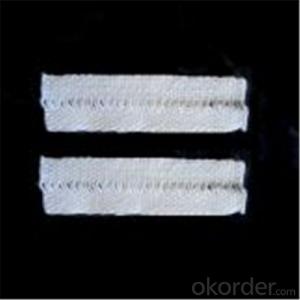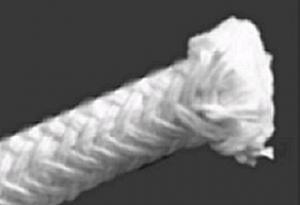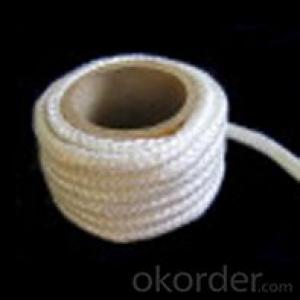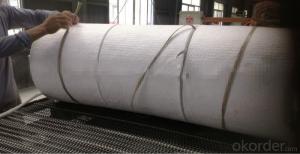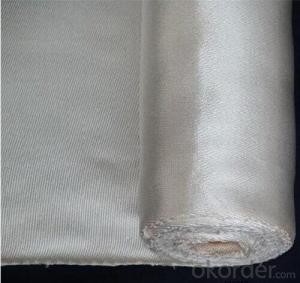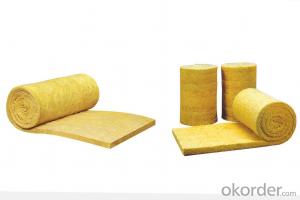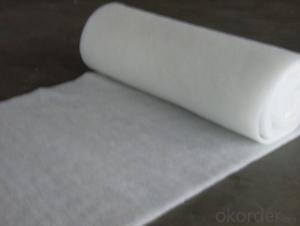Glass Fiber Textiles Fire Ceramic Fibre Round & Square Ropes 2024
- Loading Port:
- Shanghai
- Payment Terms:
- TT OR LC
- Min Order Qty:
- 10 m.t.
- Supply Capability:
- 100 m.t./month
OKorder Service Pledge
OKorder Financial Service
You Might Also Like
Quick Details
| Place of Origin: | China (Mainland) | Application: | Refractory | Working Temperature: | 450,1000,1260 |
| Fiber Diameter: | 15,20 | Model Number: | Fabric,Round woven rope, | Organic content: | ≤15 |
| Bulk Density (Kg/m3):: | 500±30 |
Packaging & Delivery
| Packaging Detail: | pp woven bag or carton box |
| Delivery Detail: | 25days |
Specifications
high quality bio soluble ceramic blanket
Specifications
Fine tensile strength
Fine high-temperature strength
Good at heat insulation
Low heat conduction ration
Fine tensile strength
Fine high-temperature strength
Good at heat insulation
Low heat conduction ration
PROCESSING:
Fibre Sennit: It includes core rope and outer warp. The core rope contains aluminosilicate fibre yarn and blanket strip etc. The outer wrap is weaved by using glass fibre or refractory alloy silk according to temperature and condition used.
Fibre wringed rope: It is wringed by multilayer aluminosilicate fibre silk which are strengthen by glass fibre and refractory alloy silk.
Fibre quit: It is bound up by glass silk fibre fabric using aluminosilicate disperse cotton as raw material. According to temperature and condition used, it can be used at the condition which can not be used by other aluminosilicate products.
TECHNICAL SPECIALITY:
Good heat resistance. The ceramic fibre fabric, which strentgth is increased by refractory alloy silk , can be used at 1000°Ccontinuously.
High quality of antacid, oil resistance and water vapor resistance
High quality of electric insulation
Fine tensile strength
Fine high-temperature strength
Good at heat insulation
Low heat conduction ration
Innocuity and harmless, not polluting environment.
APPLICATION:
Heat insulation for high-temperature pipeline and container
Kiln screen and shade
Receive spark reel door
Seal of kiln and stove door
High-temperature safety
Fireproofing coil door
Making compound materials
Safety of cable of fuel pipeline
Bag and cover for fireproofing
SPECIFICATIONS FOR THE FIBRE ROPE,STRAP,QUILT,FIBERGLAS FABRIC OF ALUMINOSILICATE:
Name | Fabric | Strap | Round woven rope | Square woven rope | Yarn twist rope | Topes twisted rope | |
Classfication Temperature(°C) | 1260 | ||||||
Density(Kg/m3) | 500±30 | ||||||
Organic content | ≤15 | ||||||
Suggest Using Temperature(°C) | 450 (Glass fiber reinforced) 1000 (Heat resistance alloy silk reinforced) | ||||||
Burning amount (800°C)% | 12±2 | 12±2 | 12±2 | 12±2 | 12±2 | 8-10 | |
Size(mm) | 30*1*2 30*1*3 | 30*20*2.3 | φ15 φ20 | 20*20 | φ15 φ20 | φ20 | |
- Q: Wrap the entire exhaust pipe of the car with fiberglass cloth. Can you reduce noise? Does it affect the exhaust pipe and the service life of the car? Thank you
- It looks like it's fiberglass stone. It works, but it doesn't help. There's nothing wrong with life, but it can cause the exhaust fan to heat up and cause trouble.
- Q: Can glass fiber textiles be used in the energy sector?
- Glass fiber textiles find applications in the energy sector. They possess diverse properties that render them appropriate for use in this sector. Insulation is one area where glass fiber textiles can be utilized. With their high thermal resistance, these textiles effectively prevent heat transfer. This characteristic is particularly advantageous in the energy sector, where insulation plays a vital role in reducing energy loss and enhancing energy efficiency. Power plants, industrial boilers, and other energy-related equipment can benefit from glass fiber textiles as insulation materials. Another potential application of glass fiber textiles in the energy sector is the manufacture of wind turbine blades. These textiles provide strength and durability to the blades, enabling them to withstand the harsh environmental conditions and mechanical stresses associated with wind energy generation. The lightweight nature of glass fiber textiles is especially advantageous in this case, as it helps improve the efficiency of wind turbines. Additionally, glass fiber textiles are employed in the construction of photovoltaic modules. These textiles provide structural support and protection to the delicate solar cells, ensuring their longevity and durability. The resistance of glass fiber textiles to corrosion and high temperatures makes them an ideal choice for safeguarding photovoltaic modules in various environmental conditions. To sum up, glass fiber textiles have multiple uses in the energy sector. Their properties, including thermal resistance, strength, durability, and lightweight nature, make them suitable for insulation, wind energy, and photovoltaic modules.
- Q: How do glass fiber textiles affect light transmission?
- Due to their unique properties, glass fiber textiles have the ability to significantly influence the transmission of light. These textiles consist of transparent glass fibers with a high refractive index, enabling them to efficiently transmit light. When woven together, these fibers form a mesh-like structure that can either enhance or impede the transmission of light, depending on how they are arranged. To enhance light transmission, glass fiber textiles can be designed to be optically clear, allowing light to pass through without obstruction. This makes them suitable for applications such as window screens or fabric used in architectural designs that aim to maximize the penetration of natural light. Additionally, the transparency of glass fibers ensures minimal loss of light intensity, making them ideal for applications where brightness is crucial. On the other hand, glass fiber textiles can also be manipulated to control light transmission for specific purposes. By adjusting the density or pattern of the fibers, these textiles can scatter or diffuse light, reducing glare and creating a more even distribution of light. This characteristic is advantageous in applications such as diffusers used in lighting fixtures or textile displays that require uniform illumination. Moreover, glass fiber textiles can be coated with different materials to further regulate light transmission. For example, applying a reflective coating can transform the fabric into a mirror, reflecting light instead of allowing it to pass through. This can be useful in applications such as privacy screens or optical devices that require redirection of light. In summary, glass fiber textiles can have a significant impact on light transmission, either by facilitating efficient transmission or by altering the light path through scattering or reflection. Their versatile properties make them suitable for a wide range of applications, from enhancing natural light to creating specialized optical effects.
- Q: Can glass fiber textiles be used for interior design purposes?
- Glass fiber textiles have various uses in interior design. These textiles are created by weaving thin strands of glass together, resulting in a fabric-like material. They possess several characteristics that make them suitable for interior design. Firstly, glass fiber textiles are highly durable and long-lasting. They can withstand wear and tear, making them perfect for high-traffic areas such as upholstery or wall coverings. Additionally, they are resistant to mold, mildew, and pests, ensuring a hygienic choice for interior design purposes. Secondly, glass fiber textiles exhibit excellent fire resistance properties. They are not easily flammable and do not contribute to the spread of flames, making them safe for interior spaces. This makes them ideal for applications like curtains, carpets, or wall panels where fire safety is a concern. Moreover, glass fiber textiles can be treated with various coatings or finishes to enhance their performance. They can be made water repellent, stain resistant, or even anti-bacterial, depending on the desired use. This versatility allows for a wide range of design possibilities and ensures that the textiles can endure everyday demands. When it comes to aesthetics, glass fiber textiles come in a variety of colors, patterns, and textures, offering limitless design options. They can imitate the appearance and texture of materials like silk or wool, providing a luxurious feel without the associated drawbacks. Whether utilized for upholstery, drapes, or decorative wall panels, glass fiber textiles add a touch of elegance to any interior space. To conclude, glass fiber textiles are a practical and versatile choice for interior design. Their durability, fire resistance, and customizable properties make them appropriate for diverse applications. Whether utilized for upholstery, curtains, or wall coverings, glass fiber textiles offer both functionality and aesthetics, making them an excellent choice for interior designers.
- Q: Can glass fiber textiles be used in the production of composites?
- Yes, glass fiber textiles can be used in the production of composites. Glass fiber textiles are commonly used as a reinforcing material in composite materials due to their high strength-to-weight ratio, excellent mechanical properties, and resistance to chemicals and temperature. When combined with a matrix material, such as epoxy or polyester resin, glass fiber textiles can enhance the overall strength, stiffness, and durability of the composite. This makes them suitable for various applications, including aerospace, automotive, construction, and marine industries. The versatility and performance of glass fiber textiles make them a popular choice for composite production.
- Q: Can glass fiber textiles be used for fashion applications?
- Yes, glass fiber textiles can be used for fashion applications. They provide unique properties such as strength, durability, and a futuristic aesthetic that can be incorporated into clothing, accessories, and even footwear designs. Glass fiber textiles can add a touch of innovation and creativity to fashion, making them suitable for various fashion applications.
- Q: How to make a fishing boat with fiberglass cloth?
- If you use it, do not pay attention to too much, there is probably a can, in the mold to pull out the line on the line.
- Q: How do glass fiber textiles affect the moisture absorption or release of fabrics?
- Fiberglass, or glass fiber textiles, have a significant impact on how fabrics absorb or release moisture. Because glass fibers are hydrophobic, they do not easily soak up moisture from the surrounding environment. This property acts as a barrier, preventing the fabric from absorbing moisture and reducing its overall capacity to hold moisture. Moreover, glass fiber textiles have a low ability to regain moisture, meaning they do not retain moisture for long periods. This characteristic allows the fabric to quickly release any moisture it may have absorbed, resulting in faster drying compared to fabrics without glass fiber content. Furthermore, the presence of glass fibers in the fabric can improve breathability. Since glass fibers do not soak up moisture, they create gaps within the fabric structure that promote air circulation. This increased airflow aids in the evaporation of moisture, leading to greater moisture release from the fabric. In conclusion, incorporating glass fiber textiles into fabrics can decrease their ability to absorb moisture, facilitate faster moisture release, and enhance breathability. These qualities make glass fiber fabrics suitable for applications where managing moisture is crucial, such as sportswear, outdoor clothing, and moisture-wicking garments.
- Q: Can glass fiber textiles be used in reinforcement of rubber?
- Yes, glass fiber textiles can be used in the reinforcement of rubber. Glass fiber textiles are known for their high strength and excellent mechanical properties, making them ideal for improving the tensile strength and durability of rubber products. When incorporated into rubber composites, glass fiber textiles enhance the overall performance and increase the load-bearing capacity of the rubber material. The glass fibers provide reinforcement by distributing stress more evenly throughout the rubber matrix, thereby reducing the risk of cracks and enhancing resistance to deformation. Additionally, glass fiber textiles can improve tear resistance, abrasion resistance, and dimensional stability of rubber products. This makes them particularly suitable for applications such as automotive components, conveyor belts, hoses, gaskets, and seals, where strong and durable rubber materials are required.
- Q: What are the different types of glass fiber textile?
- There are several different types of glass fiber textiles, including woven glass fiber fabrics, non-woven glass fiber mats, knitted glass fiber fabrics, and braided glass fiber sleeves.
Send your message to us
Glass Fiber Textiles Fire Ceramic Fibre Round & Square Ropes 2024
- Loading Port:
- Shanghai
- Payment Terms:
- TT OR LC
- Min Order Qty:
- 10 m.t.
- Supply Capability:
- 100 m.t./month
OKorder Service Pledge
OKorder Financial Service
Similar products
Hot products
Hot Searches
Related keywords
